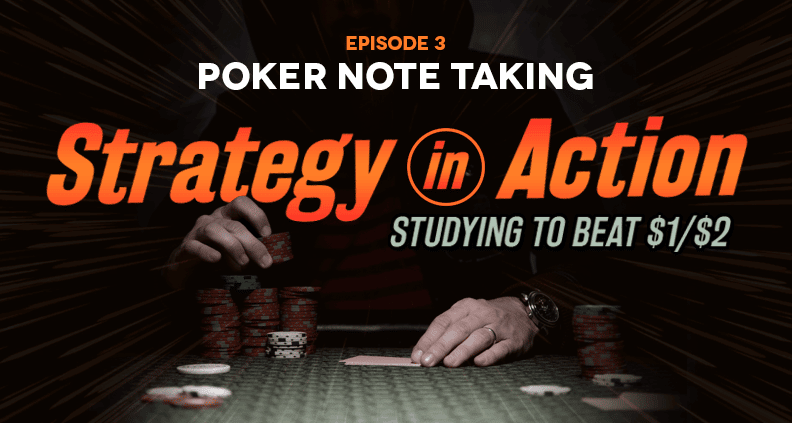Defensive Poker Strategy
- Defensive Poker Strategy Games
- Defensive Poker Strategy Against
- Defensive Poker Strategy Tactics
- Defensive Poker Strategy Game
Table Of Contents
Gareth James is a tournament poker player, author, coach, content creator and streamer.

Is GTO Poker An Offensive or Defensive Strategy? GTO is essentially a defensive strategy that incorporates the principles of balanced ranges and mixed strategy. GTO poker is not an exploitative strategy aiming for maximum profit. GTO Poker and Balanced Ranges. The top 5 strategies for novice poker players, and intermediate-level poker players include the following: Opening Hands, Bet Sizing, Limping, Folding, and Positioning. Once you’ve mastered these 5 Texas Hold’em poker strategies, you’ll be able to incorporate many other strategies into your overall game plan.
He currently grinds the off-peak Sunday schedule over on Twitch and you can find his regular strategy content, for free, over on Youtube.

I'll start this article off by saying I love Holdem Resources Calculator (HRC). I've used it for many years and regularly recommend it to my students.
However, recently I've seen some content from well-known, respected poker players, authors and streamers who seem to be suggesting that it can give you good opening ranges and responses to those ranges including good, solid BB defence strategies and I'm a bit concerned.
Defensive Poker Strategy Games
Mainly because I know that HRC cannot do these things as it doesn't factor in equity realisation.
HRC is great and I use it regularly, but definitely not for working out opening ranges or response ranges.
In this article I'm going to just focus on BB defence at 20bb and compare the results of both Holdem Resources Calculator and Simple Preflop Holdem.
READ MORE:7 Tips to Take Your Poker Game From 'Meh' to Amazing
What is Equity Realisation?
First let's talk about equity realisation, what it is and how we know HRC doesn't use it.
Defensive Poker Strategy Against
Equity realisation is how much of the pot a hand can expect to make (as a percentage) based on raw equity AND many other postflop variables including, but not limited to:
- Whether you're in or out of position
- The type of hand you have (a suited hand like 76s will realise equity better than K2o for example)
- The skill level of your opponent (e.g. will they find enough aggressive moves that will prevent you from seeing turn and river cards?)
The key thing here is the fact that it relies on postflop variables.
Now even if we take out the skill level of your opponent, it will hopefully be clear already that in order for a solver to solve properly, it will need to factor in these postflop variables.
Sadly, HRC does not. It essentially believes that after the final preflop action where neither player is all in (so there is an opportunity for postflop betting to take place) the hand just gets checked to showdown, something which rarely happens or at least is rarely strategically optimal.
Putting Theory into Practice
Let me give you an example. Nine players at the table, everyone has 20bb, the blinds are 0.5bb/1bb with an ante of 0.13bb and it folds around to the BTN who opens for a minraise.
For this example, I've run an advanced hand where I've edited the range for the BTN to see what Holdem Resources Calculator suggests the BB can call and 3-bet jam versus this open.
This is the result:
As you can see it's suggesting playing 100% of hands: calling 81.8% and 3-bet jamming 18.2%. Now you could be the best player in the world postflop, but I still don't think you're going to be able to play 72o well enough where it's actually going to make money as a call.
So what's going on here?
When the BTN opens for a minraise there are 4.67BBs in the middle and it costs the BB just 1BB to call. Thus, they're getting 4.67:1 odds which is about 17.6%.

As you can see, every single hand has enough equity to make the call here, which is why HRC is suggesting playing 100% of hands.
72o, though, does a really poor job at realising equity. In order to profitably call, you would have to realise more than 60% of your equity with 72o, something that just isn't going to happen.
READ MORE:What Is Real-Time Assistance (RTA)? Is it Legal?
Button vs Big Blind
To better illustrate this point, here's a table of selected hands for this spot 20bb BTN vs BB to look at how different hands do at realising equity, sorted by those that realise the best. For a hand to be a profitable call the equity x equity realization has to be higher than 17.6%.
Now all of the hands in this table will make the grade, simply because I only included profitable hands in the BB defence range when running the reports in Piosolver in the first place.
The key thing to focus on here is how some hands do better than others at realising equity. Suited hands will always do better than their offsuit counterparts.
Defensive Poker Strategy Tactics
Connected hands will always do better than unconnected hands. K4o, while having a lot more raw equity than 32s, does a lot worse in terms of equity realisation.
| Hand | Equity (%) | Equity Realization (%) |
|---|---|---|
| A9s | 57.27 | 113.44 |
| KJs | 53.98 | 102.79 |
| QJs | 49.68 | 101.12 |
| J9s | 43.21 | 94.6 |
| 76s | 39.19 | 91.13 |
| A8o | 53.38 | 90.87 |
| 32s | 34.45 | 90.71 |
| KJo | 51.49 | 87 |
| T2s | 35.08 | 83.08 |
| 98o | 36.18 | 80.36 |
| QTo | 45.54 | 79.94 |
| T8o | 36.79 | 74.87 |
| K8o | 44.79 | 67 |
| Q6o | 39.26 | 60.88 |
| J3o | 33.55 | 59.43 |
| K4o | 40.19 | 56.94 |
| Q5o | 38.11 | 56.44 |
Simple Preflop Holdem
So if HRC doesn't give us a usable solution, how do we solve this problem?
Enter... Simple Preflop Holdem.
Simple Preflop Holdem is a preflop solver that factors in equity realisation by considering some of the postflop variables we discussed earlier - namely postflop betting and position.
I've used exactly the same opening range for the BTN and once again given the BB the options to 3-bet jam, call or fold. Here's the result from Simple Preflop Holdem this time:
Let's take a look at the calling and 3-bet jamming strategies side by side for comparison.
As you can see there are some big differences, mainly with suited hands. Simple Preflop Holdem does a lot more calling with suited broadways and suited Aces, hands that HRC likes to jam, but then just folds hands like 94o, 93o and 73o, which HRC likes as a call.
Again there are some differences here. Simple Preflop Holdem likes to jam the weaker offsuit Ax hands more frequently, but then flats hands like AA, QTs and T7s that HRC likes to jam.
What Simple Preflop Holdem is essentially doing here is telling us that it believes it's a higher EV play to just call Aces than it is to jam and the same goes for other hands like KQs, A5s and T7s.
You can clearly see equity realisation being utilised here to give a better strategy where the EV of both lines are compared and the better one is recommended.
In Conclusion

HRC is good for many things, especially push/fold in cEV and $EV situations at 8bb and under, but it can't give you solid BB defence strategies that you can use in your own game so please don't use it for that.
When we think about which hands to flat and which hands to 3-bet jam, we should always be thinking about which line will generate the higher EV.
We also need to make sure we're making +EV decisions in the first place and not blindly following the HRC readout and calling with 72o and 94o.
Defensive Poker Strategy Game
Are you a Game Changer or just a player? Boost your ROI with just a few hours a month without breaking the bank by joining MTT Game Changer, a group coaching program for low to midstakes players and bankrolls by clicking here.